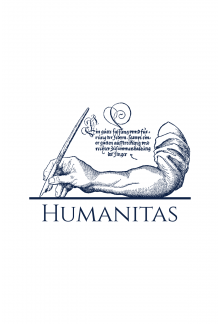- Titulinis
- Meno ir laisvalaikio literatūra
- Menas
- Menai: bendrieji dalykai
- Victorian Artists and their World 1844-1861: As reflected in the papers of Joanna and G...

Katie J T Herrington
Victorian Artists and their World 1844-1861: As reflected in the papers of Joanna and George Boyce and Henry Wells
Balsavo 0
ISBN: 9781783272594
Autorius : Katie J T Herrington
Leidimo metai: 2024
Leidėjas: Boydell Press
Puslapių skaičius: 320
Leidinio kalba: Anglų
Formatas: Kieti viršeliai
Formatas: 234×156
Autorius : Katie J T Herrington
Leidimo metai: 2024
Leidėjas: Boydell Press
Puslapių skaičius: 320
Leidinio kalba: Anglų
Formatas: Kieti viršeliai
Formatas: 234×156
Kaina:
Šių parametrų produkto neturime
Likutis pakankamas
Pristatymo terminas Lietuvoje 3-6 savaitės
Pristatymo terminas Lietuvoje 1-4 darbo dienos
Pristatymo terminas Lietuvoje 3-6 savaitės
Pristatymo sąlygos
Aprašymas
The correspondence of Joanna and George Boyce, and Joanna's husband Henry Wells (published as The Boyce Papers) gives us a rare insight into the milieu of the artists of the mid-Victorian period. Many different aspects of mid-nineteenth century artistic life are recorded in their letters , providing surprising detail which is highly relevant to the study of their contemporaries. Victorian Artists and their World is a series of case studies based on this material. This book brings together a team of authors both well-established in their fields and emerging, offering a broad range of expertise and insight.
The first group of essays begins with travel, particularly in Europe where the new railroads made journeys much easier than in the past, particularly to the new museums being created in European cities. All three of them went to Paris and other European cities, while George Boyce also travelled in the French countryside to find new subjects for his art.
Paris was also where Henry Wells and Joanna Boyce trained, but there is also a great deal of material about art training in Britain. The Boyces began essentially as financially independent amateurs, and were gradually drawn in to the increasingly institutional world of art, with the formation of new societies and the activities of commercial galleries. The next stage in an artist's career, involvement with the art market, is a continuing theme in the correspondence, 'the quirks and eccentricities of patrons and art dealers'. Studios, clubs and societies all played a part in this process, while Henry Wells, as a portrait painter, dealt directly with his often wayward clients.
It was also a period of great changes in the painting materials available to artists, and there are questions in the letters such as 'Does indigo fly?', referring to a long established colour. The survival of two of Joanna Boyce's paintboxes means that her use of newer artists' materials could be investigated, along with the problems they could cause ,- several of Joanna Boyce's paintings deteriorated rapidly because of the use of new materials.
A second group of essays looks at the place of women in the art world, as reflected in Joanna Boyce's career. While she did not belong to the campaigners who were creating a space for women artists, including the formation of the Society of Female Artists in 1857, she was very much aware of what they stood for, as is evident from her paintings, and also from her art criticism, which was praised by Ruskin; her writing for the Saturday Review remains vivid and impressive even today.
The correspondence comes to an end with Joanna Boyce's untimely death, but the three final essays deal with the longer careers of George Boyce and Henry Wells. George Boyce moved in the different world of the watercolour artists, with the Old Watercolour Society at its centre, and was until recently the best known of the trio. His place in this world is the subject of one essay; another shows him as an important art collector; there is a complete record of the sale of the collection after his death which enables us to see the range of his interests.
Finally, there is a collaborative study of the career of Henry Wells, which extended from miniatures of the early Victorian era into the twentieth century and a handful of paintings of modern life. The effect of photography led him to change from miniatures to formal portraiture in the 1850s, and he was a very active if rather conservative member of the Royal Academy towards the end of his life.
This multi-facetted volume is a valuable set of case studies on topics which are not often treated on their own, but which are very relevant to Victorian art. They remind us that there is much more to this period than the Pre-Raphaelites, and that other movements, (such as the Aesthetic painters who were an important influence on Joanna Boyce's art) flourished in their shade.
Edited by Katie J T Herrington. Contributors: Sue Bradbury, Meaghan Clarke, Louise Cooling, Pamela Gerrish Nunn, Alicia Hughes, Christiana Payne, Mark Pomeroy, Matthew Potter, Joyce Townsend, and Glenda Youde.
Atsiliepimai (0)
Palikite atsiliepimą
